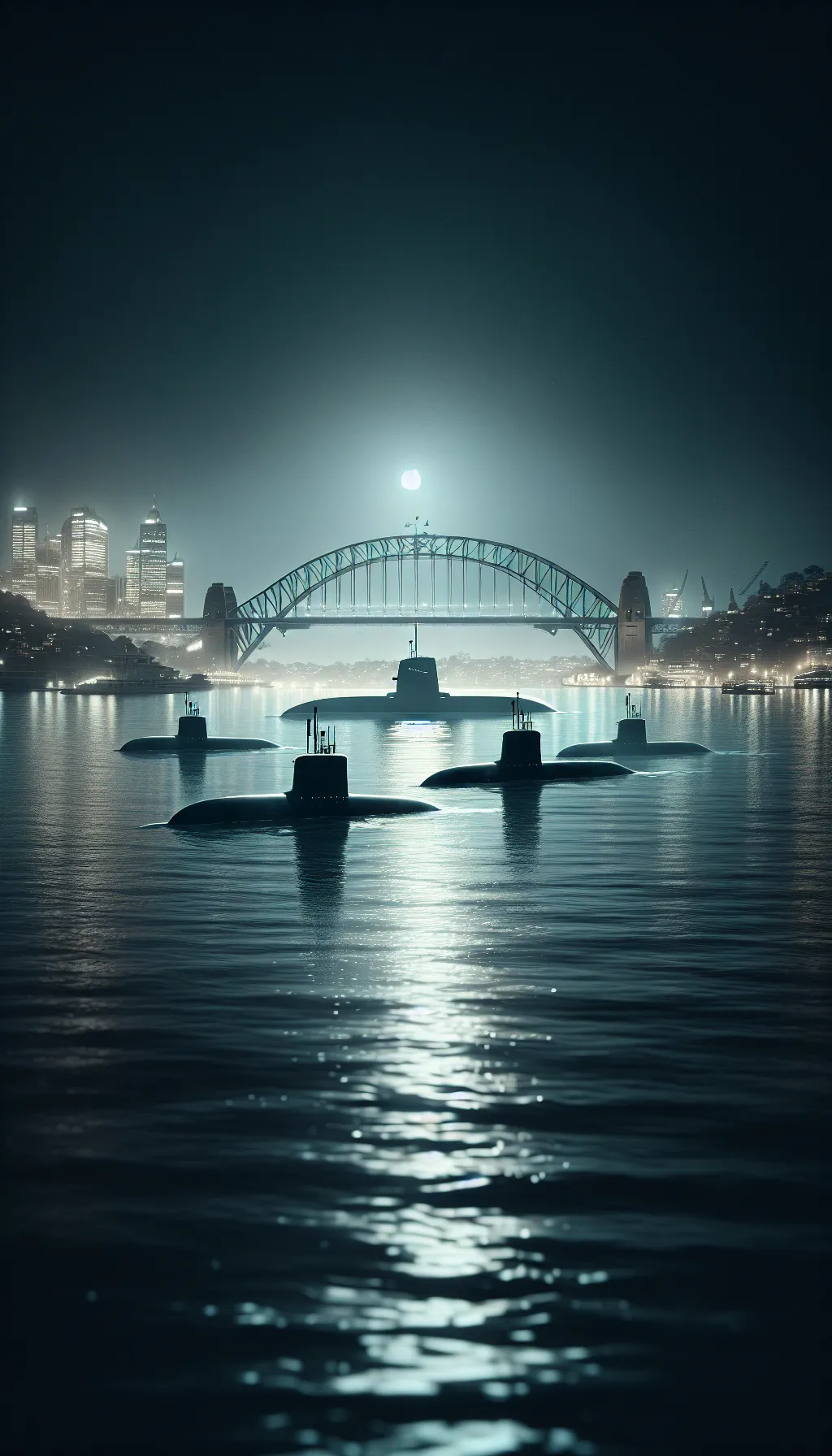Australia – The Silent Shadows: Attack on Sydney Harbour – 1942
TLDR;
- Event: On May 31–June 1, 1942, three Japanese midget submarines infiltrated Sydney Harbour during World War II, targeting Allied naval forces.
- Attack: One submarine was caught in anti-submarine nets; the other two launched torpedoes, missing the USS Chicago but sinking the HMAS Kuttabul, killing 21 sailors.
- Impact: The attack highlighted the vulnerability of secure harbors and led to increased defenses in Sydney, serving as a psychological blow to Australia.
- Legacy: The incident is remembered for the bravery of defenders and the tragic loss of life, including all six Japanese crewmen involved in the attack.
–
Story
The tranquil waters of Sydney Harbour glistened under the moonlit sky on the night of May 31–June 1, 1942. Unbeknownst to the city, danger lurked beneath the surface. As the clock ticked towards midnight, three Japanese midget submarines stealthily slipped into the harbor, their mission clear: to strike at the heart of the Allied naval presence.

World War II had reached the shores of Australia, and the Japanese Imperial Navy sought to disrupt and demoralize. The target was the bustling naval base within Sydney Harbour, a symbol of Allied strength in the Pacific. The submarines, each manned by a two-person crew, were the embodiment of stealth and precision.
As the submarines navigated the harbor’s defenses, the tension was palpable. The first submarine became entangled in anti-submarine nets and was later scuttled by its crew. The second and third submarines managed to launch their torpedoes. The primary target was the USS Chicago, but the torpedoes missed their mark. One struck the seawall, while the other sank the HMAS Kuttabul, a ferry being used as a barracks ship.
The explosion was devastating. The HMAS Kuttabul was torn apart, and 21 sailors (19 Royal Australian Navy and 2 Royal Navy) lost their lives—some in the initial blast, others succumbing later. The attack, though not achieving its primary objective, sent shockwaves through the city and the nation. It was a stark reminder of the war’s reach and the vulnerability of even the most secure harbors.
In the aftermath, Sydney fortified its defenses, and the attack became more of a psychological blow than a pivotal military event. The bravery of those who defended the harbor and the lives lost that night are remembered as a testament to resilience in the face of unexpected threats. All six Japanese crewmen perished—two by suicide after scuttling their sub, and four in combat or scuttling.
–
| Would a different strategy have changed the outcome of the attack on Sydney Harbour? |